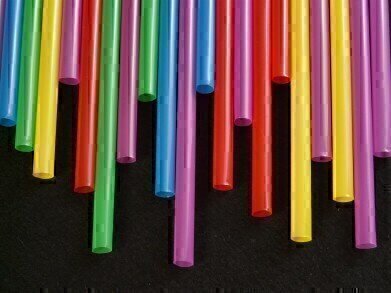Waste Management
What Are Plastics Made Of?
Oct 07 2021
Plastics have become so ubiquitous that we barely spend a minute of our lives without interacting with them. Whether it’s the fibres embedded in your clothing or the packaging that contains your lunch or the casing on the computer, smartphone or other device upon which you’re reading this article, plastics are pretty much everywhere we turn nowadays. Indeed, there are even airborne microplastics that are present in the air we breathe, posing potential dangers to our health.
Despite this, the average person still has very little idea about the materials from which plastics are made. Simply put, plastics are synthetic polymers constructed from lengthy chains of carbon and other elements in our atmosphere. Through industrial processing techniques, oil and gas are converted into hydrocarbon monomers, then combined with certain chemicals to achieve the desired strength, elasticity and appearance of the plastic in question. Here is a selection of some of the most common types of plastics, the ingredients which go into their composition and what they are used for.
Polyethylene (PE)
Polyethylene, or PE for short, is the most common type of plastic on the planet. Depending on the number of polymers in its chain, it can be manufactured to different densities, each of which carries unique properties. While low-density polyethylene (LDPE) is used to make things like plastic bags, ultra-high molecular weight polyethylene (UHMWPE) can construct military-grade armour and hydraulic seals.
Polypropylene (PP)
Polypropylene (PP) is the second most commonly used synthetic plastic behind PE. Although stronger than its more illustrious counterpart, PP is still highly flexible and refuses to crack or tear, even when subjected to repeated and prolonged stresses. It’s also resistant to both heat and acid, which is why it’s a favourite material for the automotive, medical and industrial sectors.
Polyvinyl chloride (PVC)
Polyvinyl chloride (PVC) is next in terms of the most common types of plastic and is famous for its ability to combine with other materials to form strong but flexible substances. In its more rigid form, it is commonly used to construct doors, windows and construction materials, while more pliable alternatives can be used to create insulation for electrical cables, medical tubing and even clothing.
Polyethylene terephthalate (PETE or PET)
Polyethylene terephthalate, variously known as PETE and PET, is a resin belonging to the polyester family. It is perhaps most famous for its role in the fabrication of clothing and textiles, but it also figures strongly in a number of other everyday items like food and drinks containers. It’s one of the plastics which lends itself best to recycling, but the best way to reduce plastic waste is to follow the lead of climate scientists and reuse products as much as possible.
Acrylic
Known as polymethyl methacrylate (PMMA) in scientific circles, acrylic is a substance renowned for its transparency, resilience and lightweight properties. Indeed, it’s actually 17 times more capable of resisting impact than glass, which is why it’s often used as a more pliable and robust alternative. It can also be engineered to resist abrasion, UV radiation, static and even bullets.
Events
May 05 2024 Seville, Spain
May 13 2024 Munich, Germany
May 23 2024 Beijing, China
May 23 2024 Beijing, China
Jun 10 2024 Algiers, Algeria













